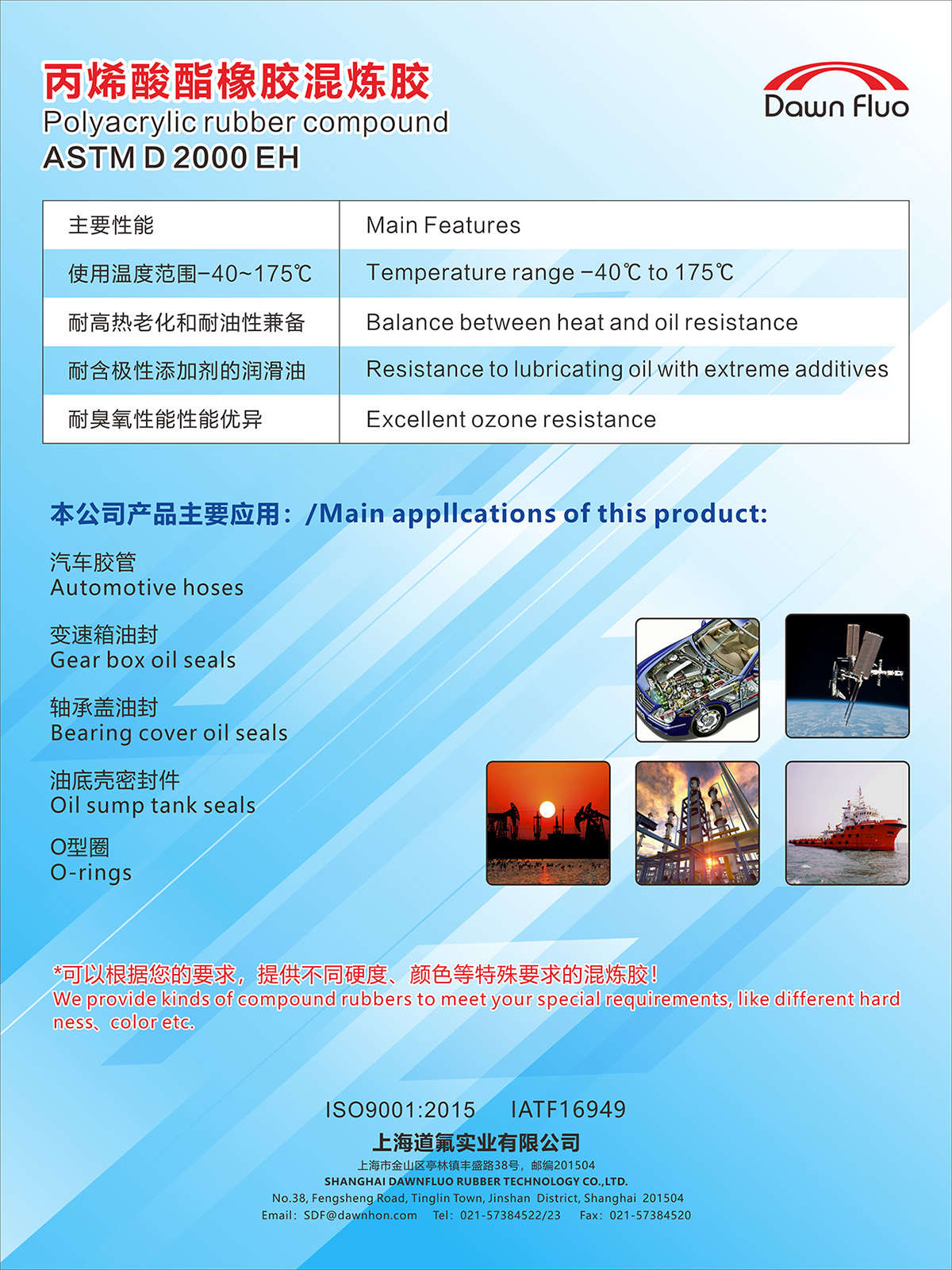
- 产品介绍
Acrylate rubber (ACM) is an elastomer obtained by copolymerization of acrylic ester as the main monomer. Its main chain is a saturated carbon chain, and its side groups are polar ester groups. Due to its unique structure, it has many excellent properties, such as heat resistance, aging resistance, oil resistance, ozone resistance, UV resistance, etc. Its mechanical and processing properties are superior to fluororubber and silicone rubber, and its heat resistance, aging resistance, and oil resistance are superior to nitrile rubber. ACM is widely used in various high-temperature and oil-resistant environments, becoming a sealing material that has been developed and promoted by the automotive industry in recent years. It is mainly used as various heat-resistant and oil-resistant sealing rings, gaskets, and oil seals for automobiles and locomotives.
Temperature range: -30 ℃~150 ℃, up to 175 ℃ in a short time
Advantages:
&Middot; Good air tightness
&Middot; Good ozone resistance
&Middot; Excellent oil resistance
&Middot; Good resistance to UV discoloration
&Middot; Good heat aging resistance
&Middot; High temperature resistant oil seals, crankshafts, valve stems, cylinder gaskets, hydraulic oil pipelines for automobiles
Disadvantages:
&Middot; Poor processing performance and easy adhesion of rubber material to rollers
&Middot; Poor cold resistance
&Middot; Not resistant to water, steam, acid-base, salt solutions, and organic polar solvents
&Middot; Poor elasticity, wear resistance, and electrical performance at room temperature
Applicable medium:
&Middot; Mineral oil (engine oil, gear oil, ATF oil)
Unsuitable media:
&Middot; Aromatic hydrocarbons, chlorinated hydrocarbons
&Middot; Hot water, steam
&Middot; Acid, alkali, amine
&Middot; Ethylene glycol based brake oil


 WeChat official account
WeChat official account
